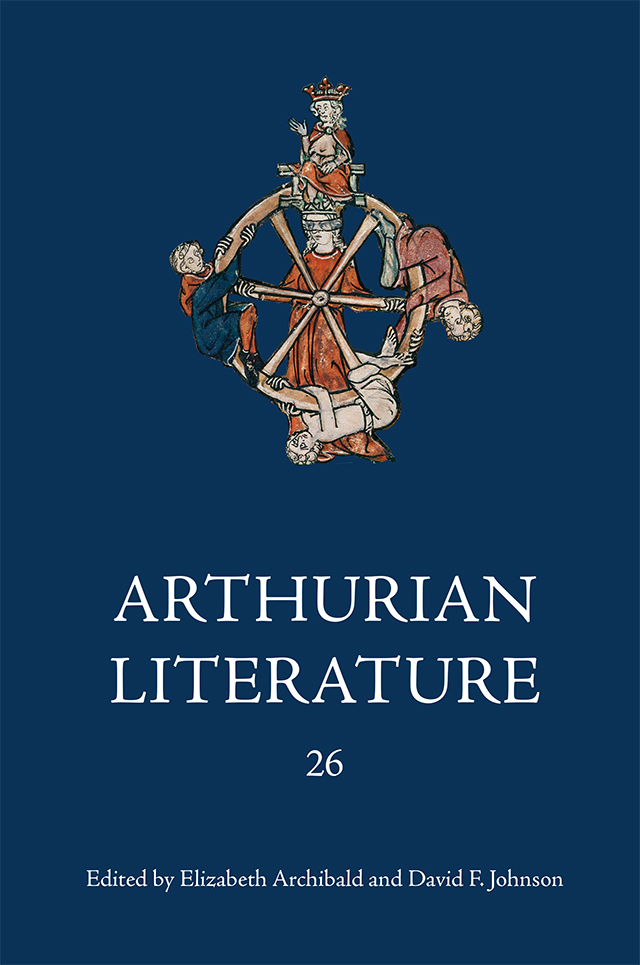Book contents
- Frontmatter
- Contents
- General Editors’ Foreword
- Contributors
- Introduction to The Morte Darthur, Parts 7 and 8
- Malory’s Text of the Suite du Merlin
- Why Arthur at All? The Dubious Arthuricity of Arthur and Gorlagon
- The Aesthetics of Communication: Sterility and Fertility in the Conte del Graal Cycle
- ‘Whyche Thyng Semeth Not to Agree With Other Histories ...’: Rome in Geoffrey of Monmouth and his Early Modern Readers
- Arthurian Texts in their Historical and Social Context
- The Post-Christian Arthur
- The Arthurian Legend in Literature, Popular Culture and the Performing Arts, 2004–2008
‘Whyche Thyng Semeth Not to Agree With Other Histories ...’: Rome in Geoffrey of Monmouth and his Early Modern Readers
Published online by Cambridge University Press: 02 March 2023
- Frontmatter
- Contents
- General Editors’ Foreword
- Contributors
- Introduction to The Morte Darthur, Parts 7 and 8
- Malory’s Text of the Suite du Merlin
- Why Arthur at All? The Dubious Arthuricity of Arthur and Gorlagon
- The Aesthetics of Communication: Sterility and Fertility in the Conte del Graal Cycle
- ‘Whyche Thyng Semeth Not to Agree With Other Histories ...’: Rome in Geoffrey of Monmouth and his Early Modern Readers
- Arthurian Texts in their Historical and Social Context
- The Post-Christian Arthur
- The Arthurian Legend in Literature, Popular Culture and the Performing Arts, 2004–2008
Summary
The first edition of William Camden's Britannia, printed in 1586, contains only two illustrations. The first is a careful rendering of the inscription, in letters described as ‘barbaric’ and quasi Gothicum, on the Glastonbury Cross, discovered along with Arthur's tomb in the 1190s. The second is a drawing of an archway from the church of St John sub Castro at Lewes, inscribed with what Camden (1551–1623) calls ‘rude little verses, in curved work, in obsolete character, which announce that a certain Magnus, formerly of the Danish royal blood, is buried there’. Stuart Piggott points out that early modern textual studies necessarily involved taking account of the physical appearance of texts: ‘In the first place, texts in manuscripts were inevitably linked to texts in inscriptions – monumental upon stone, in miniature on coins, gems and minor objects – and as accurate transcription was textually important, epigraphy went beyond transliteration as letter forms were seen to have value in themselves (in parallel to manuscript palaeography) and so inscriptions were drawn in at least approximate facsimile’. This interest in exact representation can be seen as well in works whose primary focus is not textual scholarship, though the textual emphasis of much antiquarian inquiry leads, as in the case of the two objects described above, to a privileging of artefacts which include words. While there are no other illustrations per se in the first edition of Britannia, there are, for example, several typographical renderings of Roman inscriptions. One such section reproduces inscriptions from some of the monuments near Riblechester, using Roman capitals and setting the inscriptions off from the text by indenting to do so, and records as well what Camden calls a ‘hobbling rhyme of the local people’ regarding the history of the place, this latter as part of the text, but rendered in black letter. The use of different typefaces here – black letter for the English saying, and block Roman capitals for the inscription – is primarily intended, I think, to have an interpretive function. Camden routinely uses Roman, black letter, and Saxon letter forms to differentiate the languages visually on his Latin page, and his remarks about both the inscriptions and the folk-rhyme suggest a clear hierarchy, with the Roman at the top.
By the third printing of Britannia, in 1590, the inscriptions have been joined by illustrations of coins, and these too mix Camden's Roman and British preoccupations.
- Type
- Chapter
- Information
- Arthurian Literature , pp. 109 - 130Publisher: Boydell & BrewerPrint publication year: 2009
- 1
- Cited by



